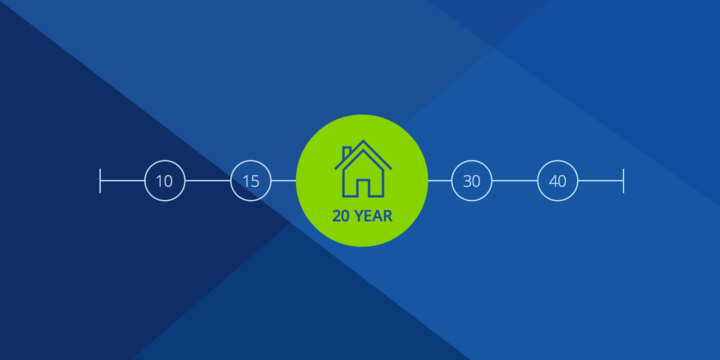What Is a Loan Estimate and How Does It Work?
The Good-Faith Estimate is a document that includes the breakdown of approximate payments due upon the closing of a mortgage loan. Here's what you need to know about the GFE.


Written by Tali Bendzak on April 8, 2024
A Loan Estimate plays an important role in the mortgage application process, giving borrowers transparency and a better understanding of the costs they’ll pay to finance their home purchase.
What Is A Loan Estimate?
A Loan Estimate is a document you’ll receive during your mortgage application process that details your financial responsibilities as a borrower, both at closing and each month during your loan term. A Loan Estimate includes sections about basic loan information, projected payments, closing costs and loan terms. Because it has a standardized format, it’s easy to compare multiple loan offers you may receive from different lenders.
History Of The Loan Estimate
The Loan Estimate as we know it today was introduced by the Consumer Financial Protection Bureau in 2015 as part of the TILA-RESPA Integrated Disclosure (TRID) rule and the Truth in Lending Act. It was created to simplify the loan application process, enhance transparency and make it easier to compare loan options. Previous to this, borrowers would receive two separate documents—a good faith estimate (GFE) and a truth in lending (TIL) disclosure. With two separate documents, comparing different lenders’ offers was more challenging.
What Is A Good Faith Estimate (GFE)?
Previous to 2015, a Good Faith Estimate was one of two documents you received upon submitting a mortgage application. It helped borrowers estimate the costs and terms associated with taking out a mortgage. Governed by the Real Estate Settlement Procedures Act (RESPA), it included information on loan terms, estimated payments and itemized closing costs. Today, this document has been replaced with a single Loan Estimate document.
However, at the same time the Truth in Lending Act created the loan estimate document, they also created a new document called a Good Faith Estimate, but serving a new purpose. This new document is not used in purchasing a home. Rather, it’s only used in reverse mortgages.
What Is Included In The Loan Estimate Form?
A Loan Estimate form contains a lot of critical information to help borrowers make informed financing decisions. Here are the key sections.
Loan information
The loan estimate will detail the loan total amount, the interest rate you’ll pay each month for borrowing money and the loan term, which is the total length of the loan. For example, it may state that you’re applying for a $350,000 mortgage loan with a fixed interest rate of 6.5% for a 30-year term.
Projected payments
Your Loan Estimate also includes your projected monthly payments a nd any other regular costs. That includes your principal and interest payment, mortgage insurance if your loan requires it and any escrow or property tax payments specific to the property. Together, these items are called your PITI (principal, interest, taxes and insurance).
Using the same example above of a $350,000 loan with a fixed interest rate of 6.5% for 30 years, you can expect to pay roughly $2,212 in principal and interest each month, $286 in mortgage insurance, $105 in homeowners insurance and $318 in property taxes.
If you aren’t at the point of having a loan estimate in hand but want a rough feel for how much your monthly payments would be, you can use a mortgage calculator to estimate your own costs. The more you know about local property tax rates and available interest rates, the more accurate your calculations will be.
Closing costs
Your loan estimate will detail your closing costs in an itemized list. Line items include appraisal fees, title insurance, origination fees and attorney fees, if an attorney is required in your state. Closing costs can vary significantly by lender, so be sure to compare costs across a few loan offers. Costs that traditionally vary most are origination fees.
Loan terms
Your Loan Estimate will also outline the terms of your loans. This includes things like the length of your loan (15, 20 or 30 years, for example) and any prepayment penalties that may apply. It will also detail the specifics of your rate, including the interest rate and whether it’s fixed or adjustable. If it’s adjustable, your Loan Estimate will show the initial interest rate, frequency of adjustment periods and limits on rate increases.
How Long Does A Loan Estimate Last?
Once you complete a mortgage application, the lender is required to provide you with a loan estimate within three business days, though it’s common to receive it sooner. Most loan estimates are only valid for 30 days. This is because your Loan Estimate is part of your loan application, which requires you to submit your most recent 30 days of paystubs. If you provide newer income documentation, you may be able to extend your loan estimate to 45 days.
If anything changes in your loan application that would affect your Loan Estimate, like a rate change, an update to tax rates or a low appraisal, your lender will send you a new Loan Estimate that will require an e-signature.
Keep in mind that when you apply for a mortgage, there’s a 45-day grace period in which you can get pre-approved with multiple lenders and it only amounts to a single hard credit inquiry on your credit report. If you’re considering reviewing loan offers from multiple lenders, be sure to do so within a 45-day window.
Can The Fees In A Loan Estimate Change?
estimate to change between the time you receive it and the loan closing. These include things like interest rates changing (if you haven’t locked in your rate yet) market conditions, lower-than-expected appraisal results, changes in your credit profile or debts or changes in your income. If your loan estimate has expired, you’ll also need to get approved again to obtain a new estimate.
Is A Loan Estimate Binding?
No, a Loan Estimate is not binding. It’s a tool designed to help borrowers understand their upfront and ongoing costs, and a loan estimate does not obligate you to get your mortgage with the lender you provided the estimate. You can shop around as much as you’d like until you find a loan you’re satisfied with.
How To Compare Loan Estimates Between Lenders
Since loan estimates are in a standardized format, comparing them is easy. Pay attention to the most important factors: interest rates, closing costs and loan terms. One loan may have a lower interest rate, but higher upfront closing costs. One may have a low introductory rate followed by periodic adjustments, while another may have a fixed rate for the entire term.
After you’ve selected your lender and moved into the underwriting process, you’ll be close to closing on your loan. Three days before closing, your lender will send you closing disclosures that include many of the same details as the loan estimate. Be sure to check that nothing has changed. If any line items have changed, be sure to ask your lender for an explanation.
How much home can you afford?
At Zillow Home Loans, we can pre-qualify you in as little as 5 minutes, with no impact to your credit score.
Zillow Home Loans, NMLS # 10287. Equal Housing Lender
Get pre-qualifiedHow much home can you afford?
See what's in reach with low down payment options, no hidden fees and step-by-step guidance from us at
Zillow Home Loans.
Zillow Home Loans, NMLS # 10287. Equal Housing Lender
Calculate your BuyAbility℠



